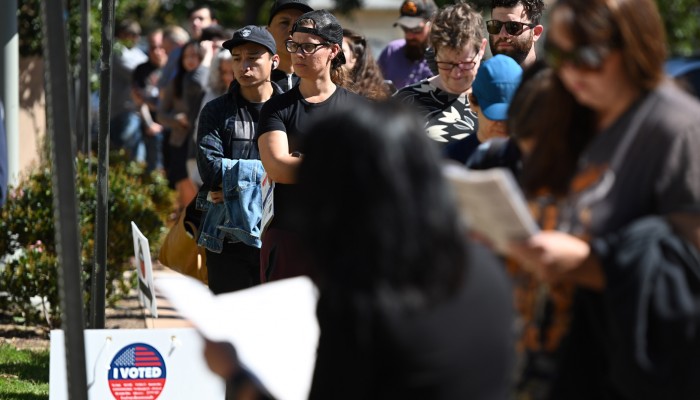This op-ed originally appeared in the Los Angeles Times.
With all signs pointing to record turnout in November — and America’s top intelligence and national security officials warning that U.S. elections remain a target for cyberattack — Tuesday’s problems in California and elsewhere (including Texas, where there were also extremely long lines), should be a wake-up call that additional safeguards are needed to ensure that all Americans can vote with confidence this fall.
Perhaps the most important lesson is that election officials need to be prepared for extremely high turnout on election day this year, even if the state has early and mail-in voting. Allocating fewer resources — such as poll workers, poll books for checking in voters and physical space — to polling places, even if a large percentage of registered voters are voting early, is a mistake. High early-voting turnout is not a predictor of low turnout on election day. Indeed, the opposite is often true.
In Orange County, for instance, 23.4% of voters cast their ballots before Super Tuesday, mostly by mail. Yet over 390,000 people voted in person on Super Tuesday, compared with about 280,000 who voted in person in the presidential primary election of 2016.
Some vote centers in Los Angeles County, which allows individuals to cast a ballot at any center in the county, were unprepared for the number of people who showed up to vote on election day. In some places, there weren’t enough check-in stations. Once voters did check in, some locations didn’t have enough working machines to handle the load.
Figuring out exactly how many check-in stations and voting machines to have at polling places is always tricky, and that’s particularly true when moving to a new voting system in a big election year, as was the case in Los Angeles. But L.A. isn’t alone. In at least 10 states, including Georgia and Pennsylvania, all or most counties are using new voting machines for the first time in federal elections.
Reducing long lines can be done with better estimates of crowd size and equipment needs and more poll worker preparation.
But ensuring that all voters can cast secure votes is perhaps the bigger challenge. For this, it’s critical that polling places have paper ballots on hand, regardless of the type of equipment voters are using.
For jurisdictions that vote on paper ballots, that means having ballots on hand to cover 100% turnout — or even more in areas that allow election day registration. For jurisdictions using electronic voting equipment, this means having paper ballots that can be marked by hand in case machines fail. While Los Angeles vote centers should have had these paper ballots, it doesn’t appear they were used to mitigate long lines. North Carolina, for example, requires that polling places using voting machines have emergency paper ballots equal to 50% of all registered voters assigned to that polling place.
Of course, poll workers need to be trained on when and how paper ballots should be distributed if there is a machine malfunction. Some states, like Ohio, have wisely adopted a rule to allow paper ballots for voters in line for more than a set period, such as 30 minutes, or if any machine at a polling place has stopped working.
The use of electronic poll books (laptop computers or tablets) to check the names of registered voters at polling locations poses a particular vulnerability. At least 41 states, including California, now rely on electronic poll books on election day.
In 2016, voting in Durham County, N.C., was thrown into chaos when the electronic poll books incorrectly showed that voters arriving at the polls to cast their ballots had already voted. The Department of Homeland Security ultimately found no evidence of a cyberattack in that case, but it illustrated how an attack could disrupt an election.
To guard against this kind of failure, every location using electronic poll books should have a backup on site that’s not connected to an internet network. This is usually a paper list of every eligible voter for that location. Several states, including Georgia and Wisconsin, have recently added this backup requirement.
Finally, all polling places should have enough provisional ballots on hand to allow people to vote if officials have to take several hours to repair problems that get in the way of confirming voter eligibility. After the election, officials can confirm the voter’s status and then record that person’s vote from the provisional ballot.
These are some common-sense ways for counties and states to minimize disruption from equipment breakdowns or malicious cyberattacks against electronic systems. When Americans turn out for a historic election, they shouldn’t be stymied by the process of voting. By planning for high turnout and building in resiliency tactics, election officials can strengthen the public’s faith in the system and make sure voters’ voices are heard.


